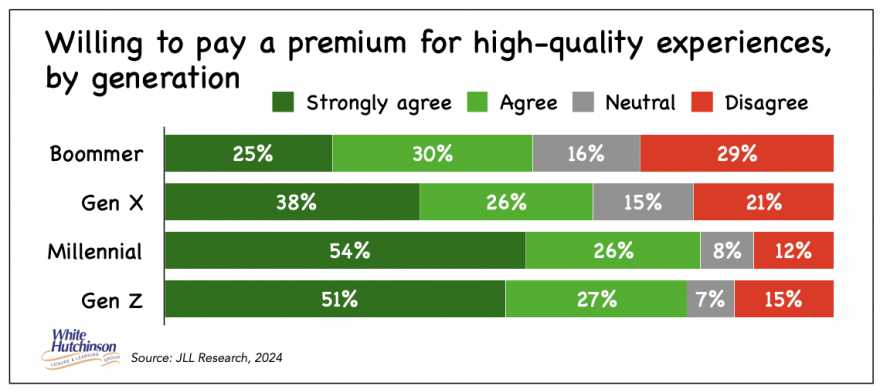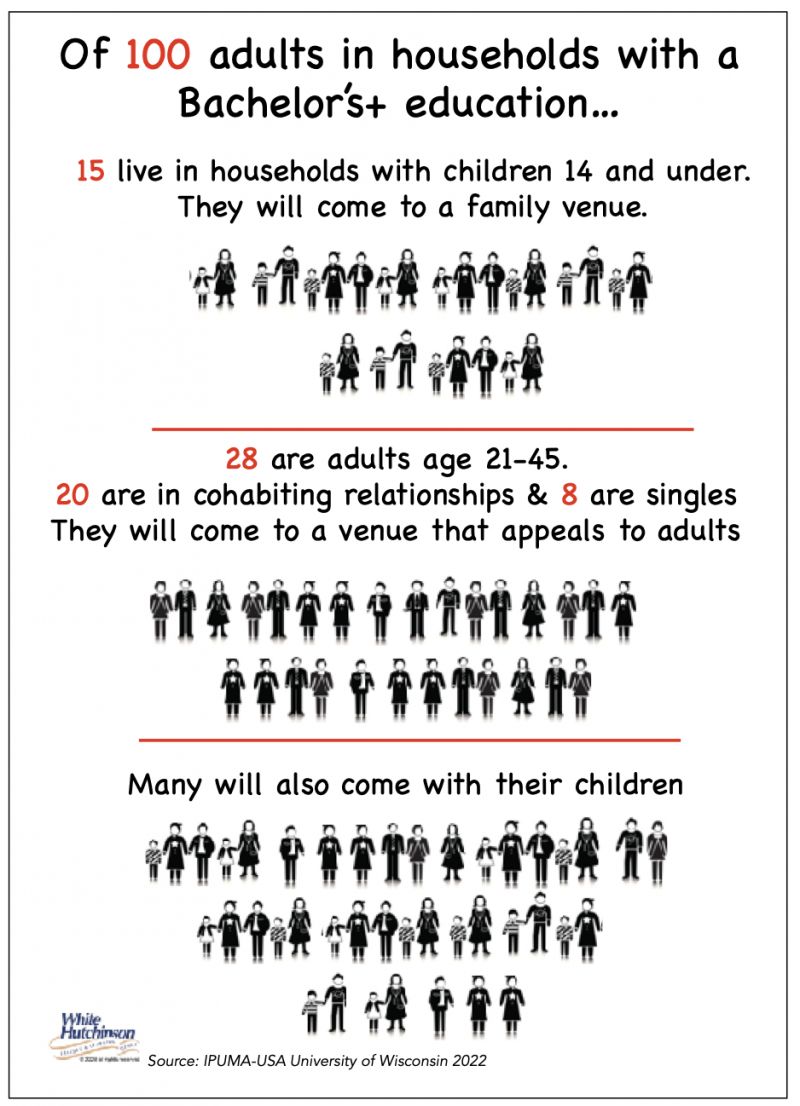
Vol. XXIV, No. 7, November 2024
The premiumization of location-based leisure experiences
JLL's 2024 Global Consumer Experience Survey found that consumers seek higher-quality experiences. Such experiences combine human-centric spaces that foster a strong sense of community, belonging, and connection (see article in this issue on social embeddedness).
The survey found that consumers are increasingly seeking premium, higher-quality in-person experiences. Respondents said they are willing to pay a premium for high-quality experiences; 80% of Millennials and 78% of GenZ said so.

Respondents across generations said fostering a strong sense of community and belonging are critical drivers in choosing an experience. Whether through dining, sporting events, concerts, or other location-based social activities, consumers are hungry for meaningful opportunities to connect with others.
The desire for premium high-quality social experiences is fueling the rapid growth of social gaming venues, a form of eatertainment (erroneously called competitive gaming by the LBE industry, as it is not about the competition*). Since 2019, Puttshack has grown from 0 to 22 locations, Flight Club has grown to eight units, and TopGolf has gone from 47 to 90 units. These are just a few examples of how fast social gaming venues are expanding.
Another factor fueling the growth of social gaming venues is that the family entertainment and children's entertainment centers that have dominated the industry fail to offer a high-quality adult-oriented social experience that appeals to young adults. The higher socioeconomic younger adult market is much larger than the higher socioeconomic family market (bachelor's+ households and households with $90,000+ incomes account for three-quarters of all location-based entertainment spending). Until recently, meeting the needs of the younger adult market has been essentially neglected by the community LBE industry, yet it is a much larger market than the family market.

* Social games are different than competitive games. Competitive games have a high skill level variance, meaning it takes a lot of practice to learn how to play and be good at it. The higher the skill level variance, the less likely a casual player will try the game. Low-skill level games are easy to learn and easy to play. With some practice, you can play against another player who already knows how to play. You might not win, but you don't feel like they are dramatically better, and you feel like you have a chance to win, especially with just a few more times.
Novices face a painful learning curve with high skill-level variance games. They will likely get poorly beaten by even lower-level players who already know how to play. High skill level variance gaming experiences can make inexperienced players feel incompetent or even embarrassed due to their lack of ability to play the game successfully.
Social games are played by a small group of people who don't have to be experienced players. The games that work have a particular rhythm where one person plays while the other people watch, converse, socialize, validate the play of each other, and enjoy food and drinks. There is light-hearted competition that isn't taken very seriously. Low-skill level games create an enjoyable social experience for all players.
The high-quality social gaming venues feature destination-worthy, trend-forward, foodie-worthy, globally-inspired menus with sharable dishes and curated beverage and alcoholic selections. The food and drink never play second fiddle to the participatory social games. Instead, it is as important, if not more so. Typically, food and beverages generate more than half of the revenue.
Subscribe to monthly Leisure eNewsletter


